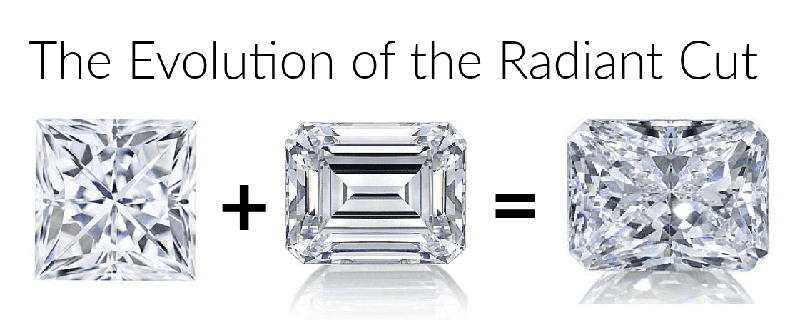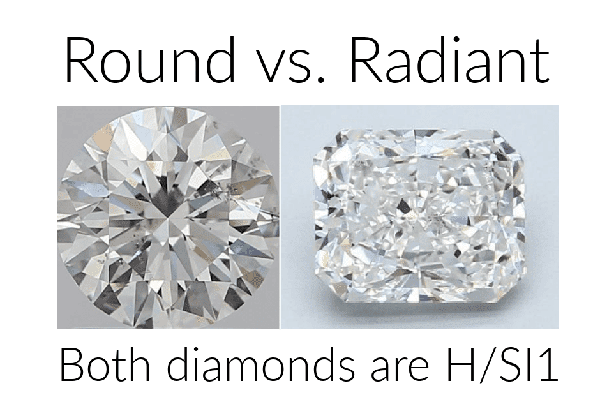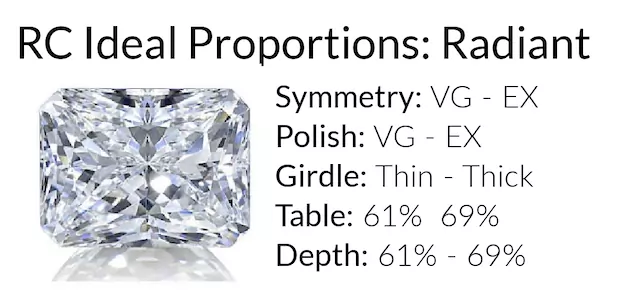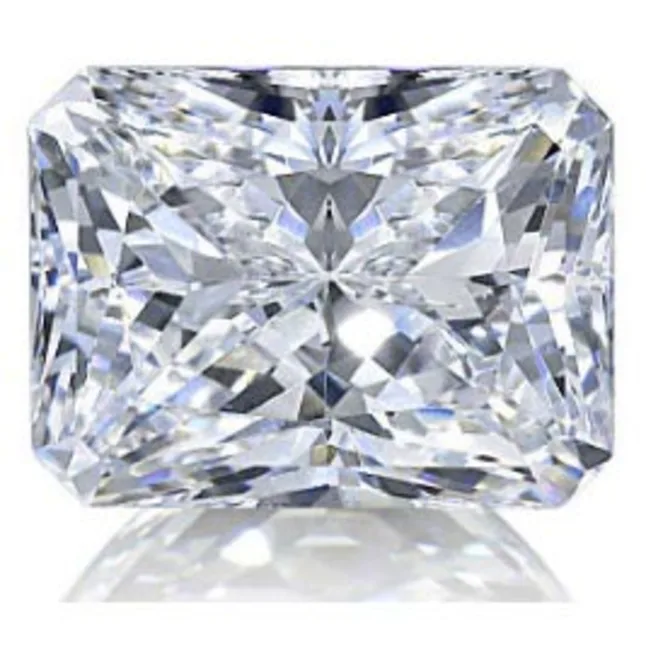The radiant cut burst onto the diamond scene in the 1970s, and just like the disco balls of the same era, they have been dazzling us ever since. I must admit that I wasn’t that into radiants for a long time (thinking them to be the poor man’s princess) but now understand that I was a fool, and radiants are actually stunning.

Why are they so cool you ask? Well they are essentially diamond hybrids. You see, if a princess cut diamond and an emerald cut diamond met on Tinder, decided to take things to the next level, had a few too many cocktails and ended up with a baby... it would be a radiant cut diamond. They embody some of the best attributes of the princess cut and the emerald cut; the vivid brilliance of princesses with all that crazy sparkle, and the sleek style of the emerald cut with those beautiful cropped edges. I’m sold.
Pros of the Radiant Cut
So, what are the pros of going for a radiant cut diamond? Well from a practical perspective, they are more robust than their princess cut mothers. Doing away with those pointed corners means far less chance of cracking or chipping. But the real star quality of the radiant cut is its ability to hide a multitude of sins. Kind of like Spanx shapewear, but easier on the eye. Because the radiant cut boasts both a ‘brilliant’ cut (underneath) and ‘step’ cut (up top), these babies are in a unique position to hide small inclusions and even color issues.
Radiant shape diamonds hide flaws better

As you can see from the side by side comparison, the radiant is hiding the inclusions better than the round. Granted, there are differences in the location, size, color and type of inclusions (as is true for every diamond) but the point is to show that you can easily find a radiant that is eye clean in the lower clarity grades.
This is the beauty of the radiant cut kids, with all those facets (or as I like to call them, sparkly distractions) you are too busy drinking in that brilliance and fire to notice small issues. Now, this is not to say that you can go super low on color and clarity grades here. Let’s not be ridiculous. I would still stick around ‘G’ or ‘H’ if you are very sensitive to those yellowish tones (‘I-J’ if you don’t mind a tiny bit of warmth). If I was choosing a radiant on clarity, I would be quite comfortable going down to ‘SI1’ given the forgiving nature of the radiant cut.
Cons of the Radiant Cut
Sounds like it’s all too good to be true, right? Well, hold your proverbial horses just a minute, because there is a small fly in the ointment here (two animal references in one sentence…the madness). The mixed cut nature of the radiant cut does have a negative side to it. The radiant cut didn’t inherit its emerald cut father’s ‘depth cheat’. If you read our take on the Emerald cut (and it’s cousin the asscher), you’ll recall these diamonds don’t need to be very deep in order to get flashy. That means that they can afford to have more of their weight in the crown on the stone where it matters, making them look bigger.
Unfortunately for our radiants however, they have their ‘step’ cut on the top and brilliant cut underneath, and because of this they tend to carry most of their weight under the pavilion. (Remember that brilliant cut diamonds need a good depth so the light has enough room to bounce around like a teenager at a disco.) So, while you are making major gains with the color and clarity, you will need to be aware that radiants look smaller than their round counterparts because they are cut much deeper. Answer? Buy a bigger one (that is the sound of your wallet slapping you/me).
Which Radiant to Get?
Unfortunately, there are no official ‘cut’ grades for radiant diamonds. This makes picking the right stone for you a pretty tricky affair, but certainly not impossible.

Just remember the golden rule you guys... always try get a look at the actual diamond on offer, like high definition 360º video, or a photo at 10x magnification before you commit. I also suggest only buying a radiant that’s GIA certified. Asking one of our Graduate Gemologists for help is a great place to start! Just click on the chat button over in the right-hand corner (you'll be happy you did, promise).
Still Not Convinced the Radiant is Right for You? Check out these great articles:
- Stunning Diamond Cuts: The Radiant
- Positively Radiant
- It's Hip to be a Square (shaped diamond)
- Whats the best cut grade for this shape? Read more here!

